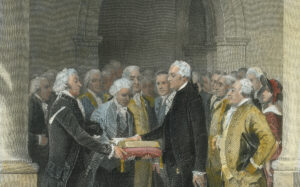There are plenty of things to do and places to visit in DC—from award-winning restaurants to nationally acclaimed theater. There are also historic monuments, tours to take, trails worth hiking, and dozens of hidden gems to check out. Here, we’ve rounded up the best museums, including those from the Smithsonian as well as other favorites.
American Art Museum
The Smithsonian’s museum for American art and craft, this museum offers both revolving and ongoing exhibits, including the nearly-100-foot-long sculpture “Bridge,” which artist Glenn Kaino created in collaboration with Tommie Smith, the winner of the men’s 200-meter race at the 1968 Olympic Games whose image on the podium along with another athlete—both with heads bowed and fists raised, in “an assertion of Black solidarity in the fight for human rights”—became an icon of the time.
8th and G streets, NW, 202-633-1000; americanart.si.edu. Metro station: Gallery Place/Chinatown.
Folger Shakespeare Library
This independent research library boasts the world’s largest collection of Shakespeare’s printed works, and hosts exhibitions on the writer’s life and times, including one of his first folios, accompanied by a touchscreen display. Inside the Great Hall, the new Quill & Crumb cafe offers lunch, baked goods, snacks, plus tea and coffee service during the day, plus light bites and drinks in the evening. Open since 1932, the building features a Tudor-style interior and an Elizabethan theater.
201 E. Capitol St., SE; 202-544-4600; folger.edu. Metro station: Capitol South. Free to walk in, but pay-what-you-will timed-entry passes have a suggested donation of $15.
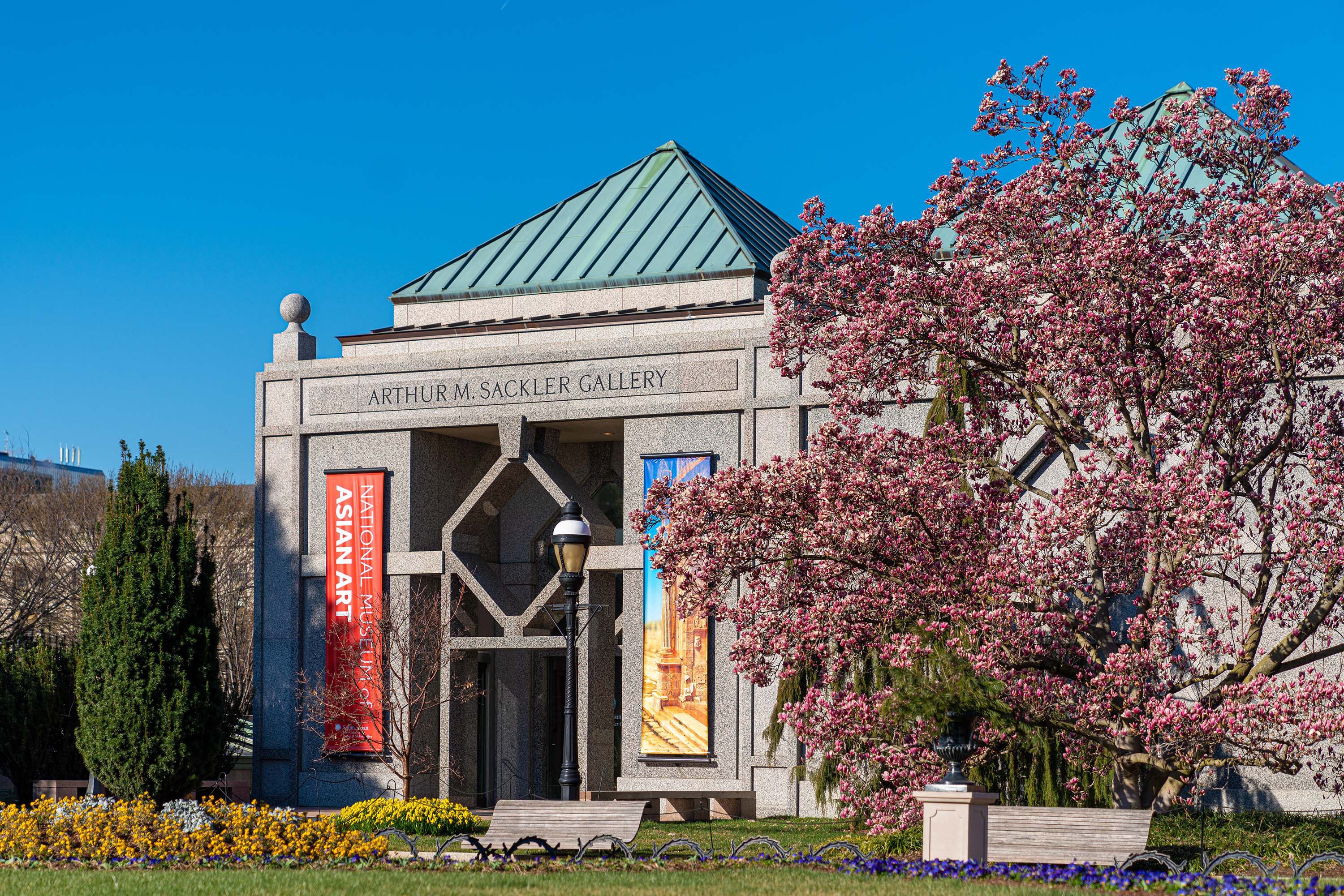
Freer and Sackler Galleries
Part of the Smithsonian’s National Museum of Asian Art, the Freer Gallery of Art and the Arthur M. Sackler Gallery feature a range of art mediums, including particularly significant collections of, respectively,works by James McNeill Whistler (including paintings, and his famous Peacock Room) and ancient Chinese jades and bronzes.
Made up of two buildings, connected underground, the Freer is in the West building at Jefferson Drive and 12th St., SW; https://www.si.edu/museums/freer-gallery. The Sackler is in the East building at 1050 Independence Ave., SW; https://www.si.edu/museums/sackler-gallery. Metro station: Smithsonian. Free

Glenstone
Just outside DC, in Potomac, Maryland, Glenstone blends art, architecture, and nature, giving visitors space for “ongoing reflection and contemplation.” There’s an outdoor trail, a cafe, a soothing central courtyard, and regularly scheduled live music on the patio.
12100 Glen Rd., Potomac; 301-983-5001; Glenstone.org. Free.
Hirshhorn Museum and Sculpture Garden
A hub for contemporary art, the Hirshhorn Museum’s rotating exhibits have included two wildly popular, interactive displays from Yayoi Kusama, and currently on view, Basquiat × Banksy. Note: The sculpture garden is currently closed for renovations.
Independence Ave. SW and 7th St. SW; 202-633-1000; hirshhorn.si.edu. Metro station: Smithsonian or L’Enfant. Free.
International Spy Museum
Founded by Milton Maltz, a codebreaker during the Korean War, to offer the public some insight into the spy trade, this museum moved from its original Penn Quarter location to its later L’Enfant Plaza site in 2019. Discover the tricks of the world’s most famous spies, including a coat with a buttonhole camera and a KGB shoe with a heel transmitter. In “Undercover Mission,” an interactive experience, visitors test their spy skills and are assessed on their ability to blend into their environment, crack codes, and uncover hidden dead drop sites.
700 L’Enfant Plaza, SW; 202-393-7798; spymuseum.org. Metro station: L’Enfant Plaza. Starting at $31.75.
The Kreeger Museum
Largely made up of the personal collection of David and Carmen Kreeger, this museum favors 19th and 20th century paintings, including works by such artists as Monet, Picasso, and Braque, in addition to those by local artists including Sam Gilliam, and Simmie Knox, whose work is currently on view as part of the museum’s DC-artist-focused program called The Collaborative. Outside, the museum hosts an array of events, including a jazz series, yoga, and more, in its sculpture garden.
2401 Foxhall Rd., NW, 202-337-3050; kreegermuseum.org. $15 for adults; $10 for students, educators, seniors, and military; free for members and people 18 and under.
Library of Congress
Right next to the Capitol sits the largest library in the world, housing books, photographs, maps, and other items on more than 500 miles of shelves. The Library of Congress dates back to 1800, when President Adams signed a bill inaugurating Washington as the official seat of government and granting $5,000 to establish a library in the Capitol. After the building was burned down by British troops in 1814 and the books destroyed, Thomas Jefferson offered his own collection of tomes as a replacement.
The library itself now takes up three buildings in DC and the Packard Campus in Culpeper, Virginia, and has more than 151 million items in its collection, including 66.5 million books, 34.5 million manuscripts, and an extensive collection of music, photographs, and film.
Inside the Thomas Jefferson Building, murals, statues, and mosaics adorn the walls and the ceiling of the dome. On the first floor, you can take a walk onto the floor of the grand Main Reading Room, usually reserved for credentialed researchers, at designated times Tuesday through Friday. On the second floor, “Thomas Jefferson’s Library” displays the 6,487 books on which the current library was founded. You can also see the Gutenberg Bible and 15 other early bibles in interactive form on the first floor in the Great Hall. And if you want to access any of the library’s books, you can sign up for a research card if you have a photo ID.
Jefferson Building, 10 First St., SE; Madison Building, 101 Independence Ave., SE; 202-707-5000; loc.gov. Metro station: Capitol South. Free; timed-entry passes are required.
Museum of the Bible
Among the newer museums in DC, the Bible museum opened in November 2017, and aims to be among the most technologically advanced museums in the world while highlighting more than 4,000 years of history, with ancient artifacts, workshops (additional fees apply), and an immersive theater.
400 4th St. SW; 866-430-6682; museumofthebible.org. Metro station: Federal Center SW. $30 for adults; $20 for kids 5-17; and free for children 4 and under.
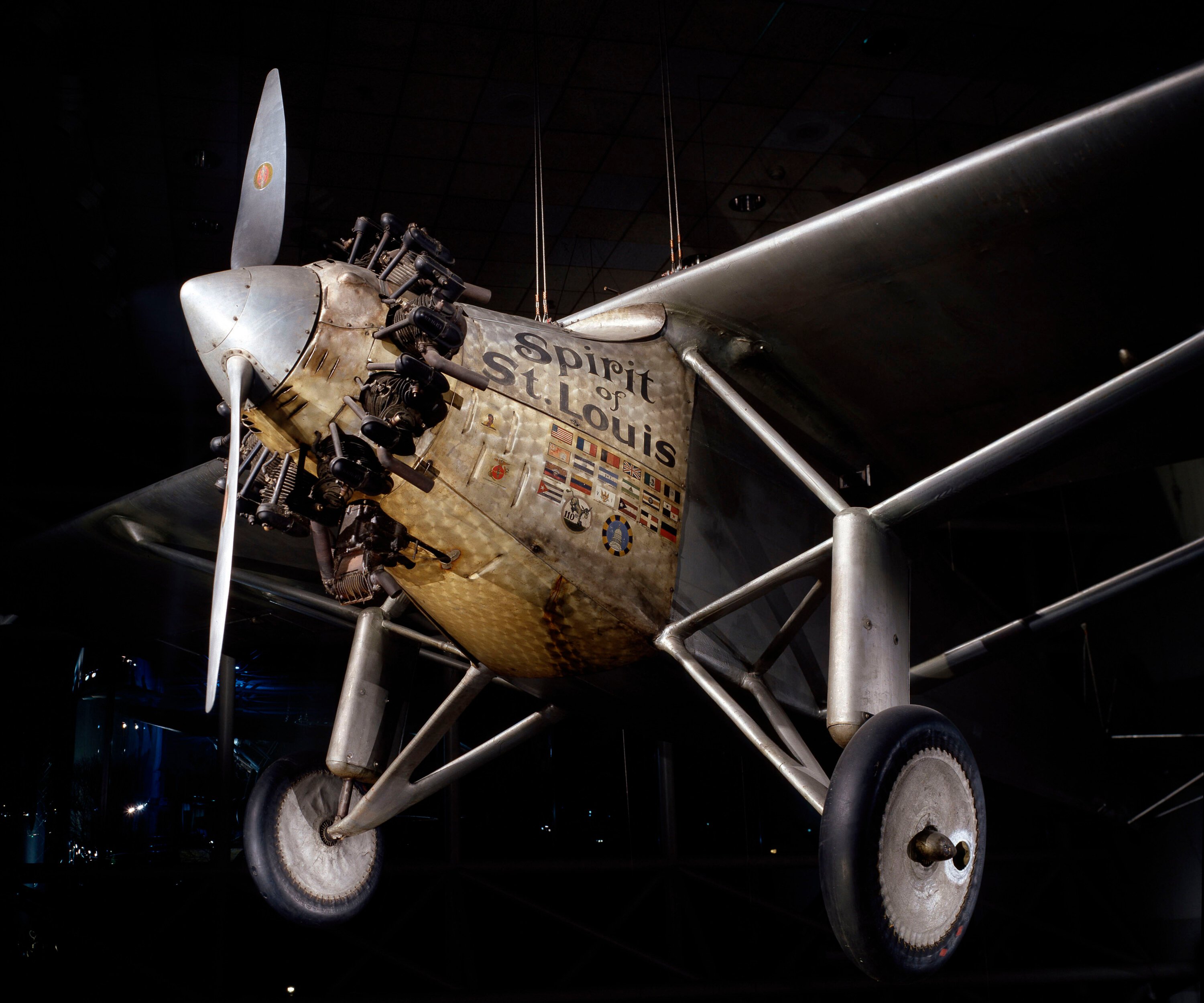
National Air and Space Museum
Among the most visited Smithsonian institutions, the National Air and Space museum is home to the world’s largest collection of air and spacecraft, as well as interactive flight simulators, a planetarium, Imax movies, and more. Initially signed into law by President Truman as the National Air Museum in 1946, the museum was renamed the Air and Space Museum in 1966 by President Johnson.
Having moved to its current home on the National Mall in 1976, the museum began undergoing a multi-year renovation in 2018, including an update of its exterior facade, which was finished in 2023, and a redesigning of all 20 exhibition rooms. Eight exhibition rooms, the planetarium, museum store, and the cafe reopened in 2022. Expected to open in spring 2025 are the Lockheed Martin IMAX Theater, and two additional exhibition rooms—including the Boeing Milestones of Flight Hall, which displays the Bell X-1 in which Chuck Yeager broke the sound barrier, and the Friendship 7, in which NASA astronaut John Glenn became the first American to orbit the Earth; and the Barron Hilton Pioneers of Flight Hall, which celebrates the 1920s and 30s era of aviation.
Sixth ST. and Independence Ave., SW; 202-633-1000; nasm.si.edu. Metro station: L’Enfant Plaza/Smithsonian. Free; timed-entry passes are required.
National Air and Space Museum Steven F. Udvar-Hazy Center
Located near Dulles Airport, the Air and Space Museum’s annex includes some of the larger items from the collection spread out over 340,000 square feet. Open since 2003, the center includes the Enola Gay, the Boeing airplane that dropped the first atomic bomb on Hiroshima, an Air France Concorde, and a Gemini VII space capsule.
The Udvar-Hazy Center also has flight simulators and an Imax theater, as well as an observation tower from which visitors can watch planes land at Dulles.
Steven F. Udvar-Hazy Center, 14390 Air and Space Pkwy., Chantilly; 202-633-1000; nasm.si.edu/udvarhazy. Not Metro accessible. Free.
National Archives
The government’s vast store of papers, photos, audio, video clips, and other historical records includes three crown jewels of the collection: the original Declaration of Independence, Constitution, and Bill of Rights. Open since 1935, the building informally known as Archives 1 has the Charters of Freedom on display in the rotunda, as well as two large-scale murals by Barry Faulkner. You can view an original copy of the 1297 Magna Carta in the Record of Rights permanent exhibit.
701 Constitution Ave. between Seventh and Ninth Sts., NW; archives.gov. Metro Station: Archives-Navy Memorial. Free.
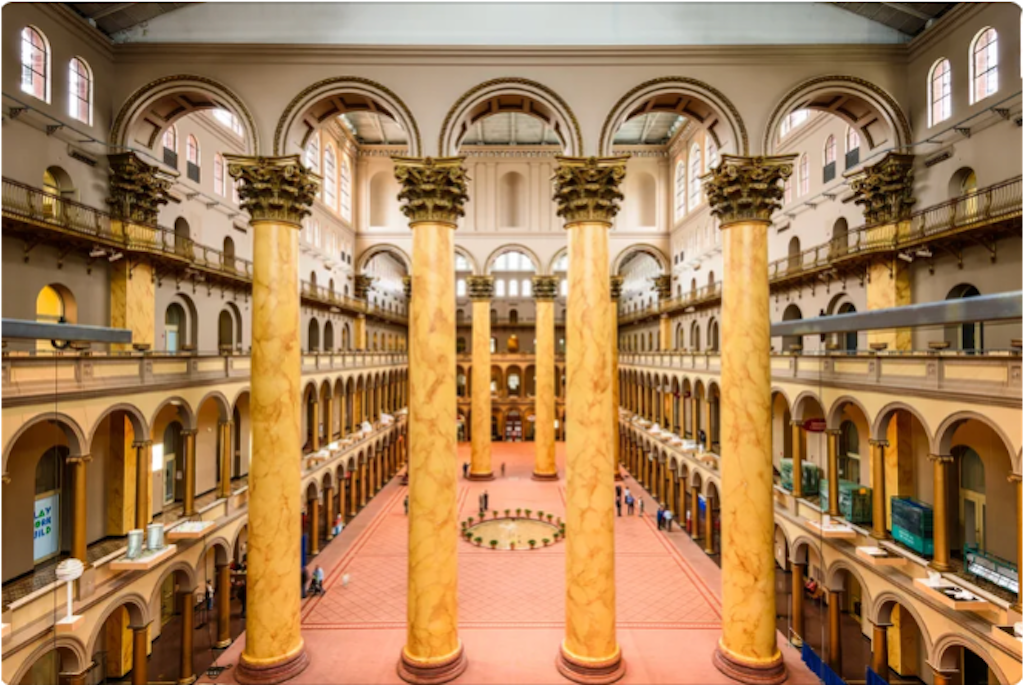
National Building Museum
“The world we design and build” is the tagline of this Penn Quarter museum, which explores buildings and the art of creating them. Housed in the former Pension Bureau building, the museum is worth a trip for its architecture alone, with dramatic 75-foot-high interior columns in the Great Hall (some of the largest in the world). Features include daily event programming, rotating exhibits, and such ongoing exhibits as “Building Stories,” an immersive experience that brings children’s books to life.
401 F St., NW; 202-272-2448; nbm.org. Metro Station: Judiciary Square. $10/adult, $7/you and seniors.
The National Gallery of Art
The National Gallery of Art’s neoclassical West Building is home to paintings, sculpture, and other works dating from the 13th to the 20th century. The I.M. Pei–designed East Building opened in 1978 and houses mostly modern and contemporary art. It reopened in 2016 after a total overhaul; don’t miss the Mark Rothko room and the 15-foot Blue Rooster on the roof terrace. The best way to enter the West Building is through the Mall entrance on Madison Drive, which leads into the building ’s impressive central rotunda. Take a right and you’ll find the 19th-century French galleries, which are home to works by Monet, Renoir, Cézanne, and others. On the west side of the building, don’t miss “Ginevra de’ Benci,” the only painting by Leonardo da Vinci in the Americas—which features a special surprise on its back. An underground tunnel on the concourse level leads past the bookstore to a larger museum store and dining area.
Constitution Ave. between Third and Seventh Sts., NW; 202-737-4215; nga.gov. Metro station: Archives-Navy Memorial-Penn Quarter. Free.
National Geographic Museum of Exploration
**Opening in 2026
Part of the National Geographic Society, this museum will host exhibits that are often hands-on and high-tech. As you’d expect from the esteemed 124-year-old society, programs focus on science, nature, space, history, and culture, with lots of child-friendly features.
1145 17th St., NW; 202-857-7588; nationalgeographic.org/society/museum-of-exploration. Metro Station: Farragut North/Farragut West.
National Museum of African American History and Culture
Within four months of its 2016 opening, the National Museum of African American History and Culture—designed to highlight the richness and diversity of the African American experience—tallied more than one million visitors. On the outside, it’s an architectural beacon with symbolism in every detail of its design. Inside, its collection of more than 40,000 pieces includes artwork by African American artists, a hymnal that belonged to Harriet Tubman, Nat Turner’s bible, a plantation cabin from South Carolina, and a guard tower from Angola prison, with exhibits that explore slavery, segregation, the African American military experience, sports, music and theater, Black women’s activism, and more.
1400 Constitution Ave., NW; nmaahc.si.edu. Metro station: Smithsonian or Federal Triangle.
National Museum of African Art
The Walt Disney-Tishman African art collection, including more than 500 pieces of African art, is among the highlights of this museum, which is dedicated to “the collection, exhibition, conservation, and study of the arts of Africa,” and celebrated its 60th birthday last year.
950 Independence Ave., SW; 202-633-4600; africa.si.edu. Metro station: Smithsonian. Free.
National Museum of American History
Where else in the world can you find Dorothy Gale’s ruby slippers, the original Star-Spangled Banner, and Kermit the Frog in one place? This monument to all things American reopened in 2008 after $85 million of renovations. The museum’s three floors hold artifacts as well as rotating special exhibitions.
The first floor focuses on transportation, technology, science, and innovation. Inside the 26,000-square-foot exhibition “America on the Move,” 340 objects showcase the evolution of transportation in America, from the first car ever driven across the country, a 1903 Winton, to an interactive model of a Chicago commuter train.
On the second floor, don’t miss the Star-Spangled Banner gallery, where a climate-controlled chamber displays the flag sewn by Mary Young Pickersgill. Also on the second floor are Thomas Edison’s 1879 light bulb and the original Greensboro lunch counter from the 1960 sit-ins. On the west side of the third floor, “American Stories” (opening April 15) includes the aforementioned ruby slippers and Kermit.
14th St. and Constitution Ave., NW; 202-633-1000; americanhistory.si.edu. Metro station: Federal Triangle. Free.
National Museum of the American Indian
This dramatic limestone museum focuses on the diverse cultures of Native Americans. It was founded by George Gustav Heye in 1916 and folded into the Smithsonian in 1989, opening in its current location on the Mall in 2004. The museum’s smooth, flowing exterior is designed to help it blend into the environment around it, which includes more than 40 boulders, called “grandfather rocks,” 25 native shrub species, 27,000 herbaceous plants, and a water feature. Inside, its five floors of exhibitions represent 1,200 years of history and 1,200 indigenous cultures through historic artifacts, clothing, bowls, weapons, artwork, tools, and more.
Fourth St. and Independence Ave., SW; 202-633-1000; nmai.si.edu. Metro station: L’Enfant Plaza/Federal Center. Free.
National Museum of Natural History
In 2024, the Natural History Museum had more than 3.9 million visitors, making it the most popular of the Smithsonian museums. It’s also one of the oldest on the Mall, having sat in its domed Beaux-Arts building since 1910. The museum owns more than 126 million items in more than 1.5 million square feet of exhibits. It was originally founded in 1846, at the same time as the Smithsonian Institution; construction on the new building was halted in 1905 because Smithsonian leaders objected to the French-influenced design of the museum’s entrance, which was subsequently simplified.
The Constitution Avenue entrance leads to a lobby where an Easter Island statue stands guard; exhibitions include a 1.6-million-year-old Kenyan hand-ax and Northwest Coast totem poles. On the first floor, a 13-foot Fénykövi elephant from Angola sits under the central dome in the rotunda, while the adjacent Sant Ocean Hall is dominated by the model of a North Atlantic right whale. Upstairs on the second floor, the 45.52-carat Hope Diamond is the centerpiece of the Gems and Minerals gallery, and the Butterfly Pavilion allows visitors to walk through an indoor garden surrounded by hundreds of live butterflies and moths (at press time, the exhibit was temporarily closed for maintenance so check before you visit; tickets are $8/adults and $7/children and seniors). The nearby Insect Zoo features creepy crawlies, including live tarantulas, cockroaches, and bees. An Imax theater on the first floor shows nature movies on six-story-high screens.
Tenth St. and Constitution Ave., NW; 202-633-1000; naturalhistory.si.edu. Metro station: Federal Triangle/Smithsonian. Free.
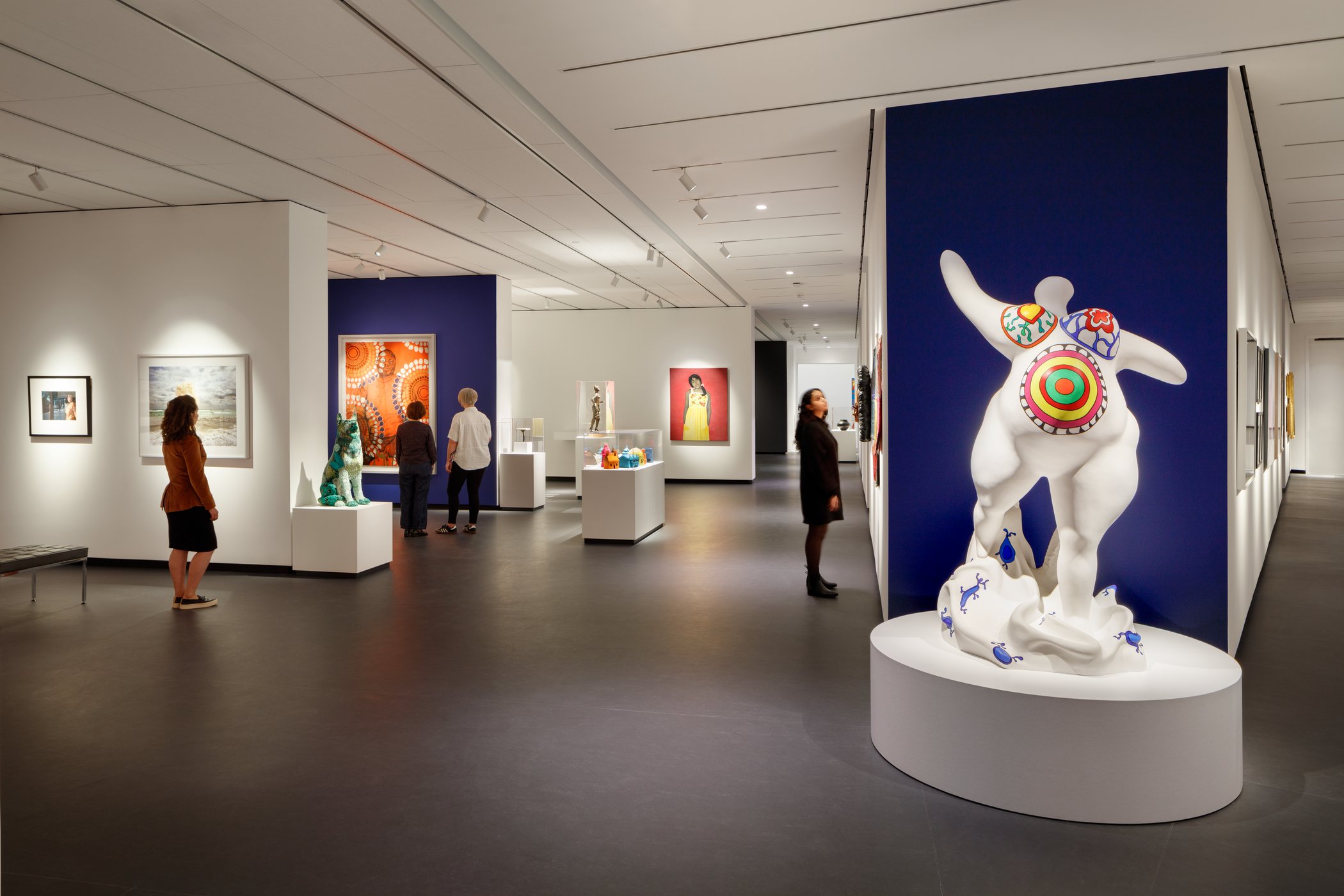
National Museum of Women in the Arts
The collection at this recently renovated downtown museum includes more than 5,500 pieces from more than 1,000 artists, spanning the 16th century to today. Currently on view is the exhibit Uncanny, which explores Freud’s concept of the “psychological experience of something that is strangely familiar, yet alien, eliciting a sense of anxiety,” specifically as it pertains to the historical representation of women, through painting, sculpture, photography, and videography.
1250 New York Ave., NW, 202-783-5000; nmwa.org. Metro station: Metro Center. $16 for adults, $13 for seniors and DC residents. Visitors 21 and under, and those with disabilities, are free.
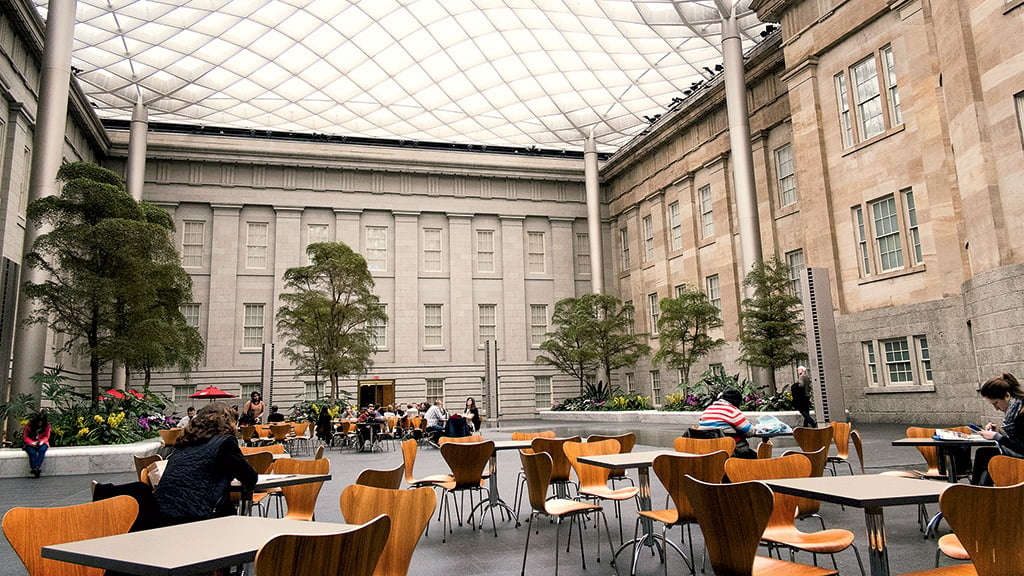
National Portrait Gallery
Spanning four floors of permanent and rotating exhibits, the National Portrait Gallery is perhaps most famous for its American Presidents exhibition, which houses the nation’s only complete collection of presidential portraits outside of the White House. The gallery offers “highlight tours,” with no reservations required, at noon and 2:30 PM daily.
8th and G streets, NW; 202-633-1000; npg.si.edu. Metro station: Gallery Place/Chinatown Metro station.
National Postal Museum
Open to the public since 1993, this Smithsonian museum lives in the Old Post Office building next to Union Station, and features interactive displays and exhibitions about the mail. Inside the majestic 1914 Beaux Arts structure, rotating stamp collections, wartime letters, and other items detail the history of the mail service since before the American Revolution. Don’t miss the Philatelic Gallery, which has examples of some of the most interesting and noteworthy stamps in the world.
2 Massachusetts Ave., NE; 202-633-1000; postalmuseum.si.edu. Metro station: Union Station. Free.
The Phillips Collection
Featuring more than 5,000 works of art—one of the most famous of which is Renoir’s “Luncheon of the Boating Party”—this intimate gallery was founded by Duncan and Marjorie Phillips in 1921.
1600 21st St., NW; 202-387-2151; phillipscollection.org. Metro station: Dupont Circle. $20 for adults; $15 for seniors (62+); $10 for students and educators; $12 for military; free for members and children 18 and under.
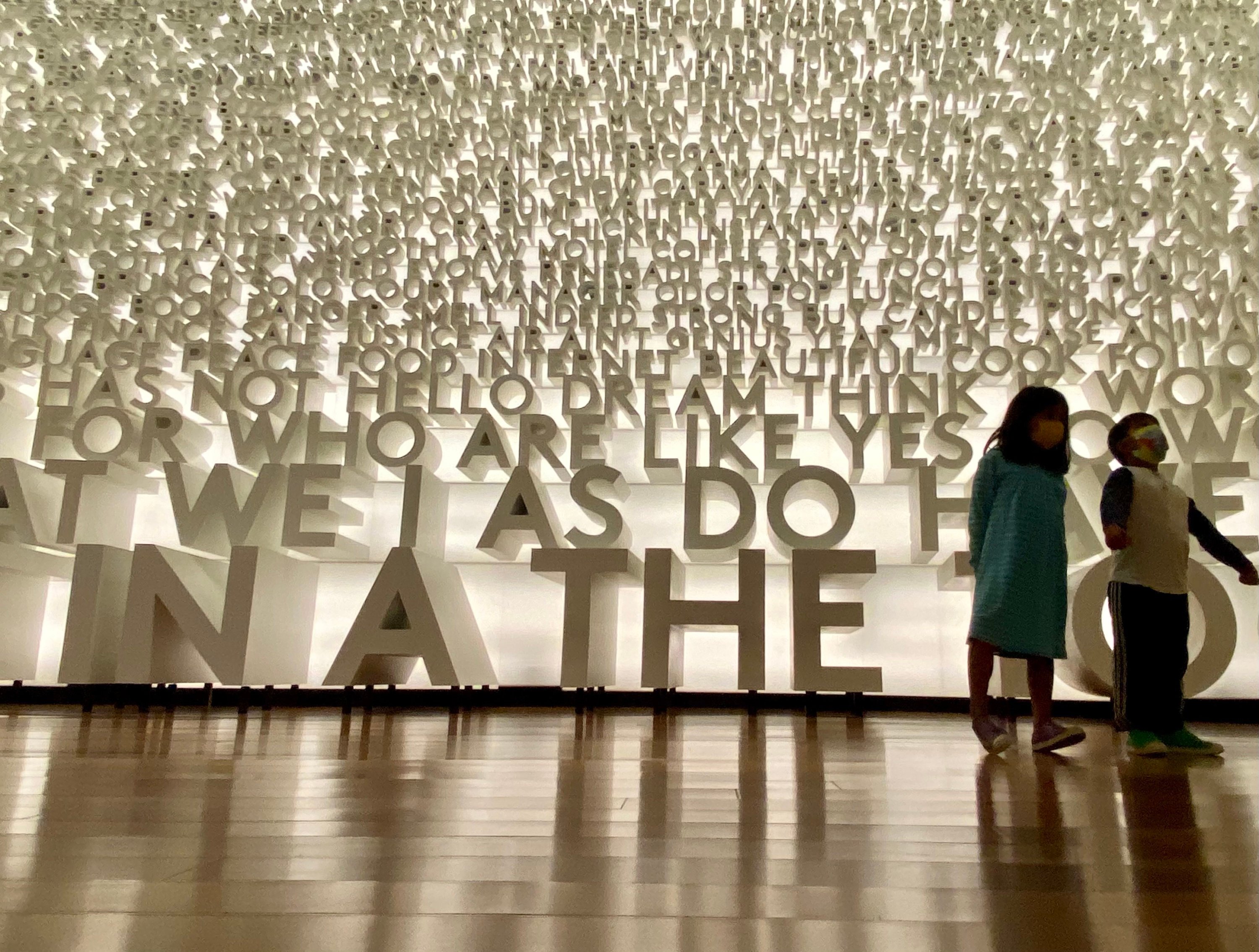
Planet Word
Opened in 2020 in the Franklin School building, Planet Word is an interactive museum with a linguistics theme. Visitors can spend their time solving puzzles and riddles, learning about and listening to various languages, and exploring music, jokes, and poetry, and more.
925 13th St. NW; 202-931-3139; planetwordmuseum.org. Metro station: McPherson Square. Free, with a suggested $15 donation. Timed entry passes strongly encouraged.
The Renwick
Part of the Smithsonian Art Museum, the Renwick Gallery is across the street from the White House. Inside, the gallery is home to craft and decorative art. Contemporary quilts and a colorful fiber and lighting installation are currently on view.
Pennsylvania Ave. at 17th St., NW; 202-633-7970; americanart.si.edu/visit/renwick. Metro station: Farragut West. Free.
Rubell Museum
This contemporary art museum is housed in a former junior high school. The current exhibit, “American Vignettes: Symbols, Society, and Satire,” showcases more than 100 works by 40 artists, in a variety of mediums including painting and video.
65 I St., SW, 202-964-8254; rubellmuseum.org. Metro station: Navy Yard-Ballpark. Admission is based on a pay-what-you-wish donation Wednesday through Friday, and is $15 for adults, $12 for seniors, and $10 for youth on Saturday and Sunday. DC residents, visitors with disabilities, and military and veterans are free.
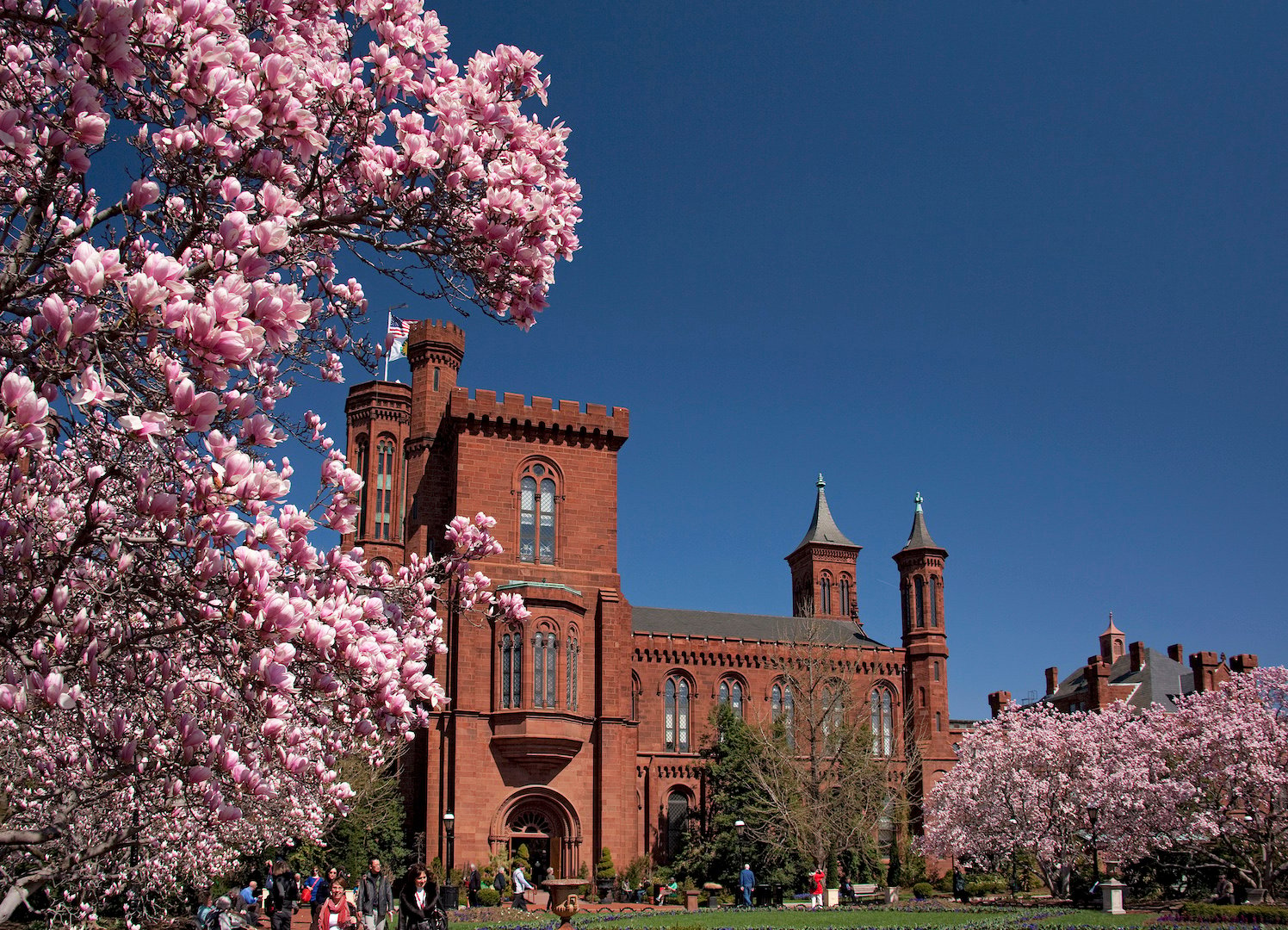
Smithsonian Castle
*The Smithsonian Castle closed for a five-year renovation in 2023.
Informally known as the Castle thanks to its Norman-style turrets and Gothic Revival facade, this Smithsonian Institution Building makes a good base from which to start any sightseeing trips; its adjacent S. Dillon Ripley Center hosts exhibitions in the International Gallery and performances in the Discovery Theater. Don’t miss Smithson’s Crypt by the north entrance to the Castle, the final resting place of Smithsonian founder James Smithson.
1000 Jefferson Dr., SW; 202-633-1000; si.edu. Metro station: Smithsonian. Free.
United States Holocaust Memorial Museum
This heart-rending museum explores the history of the Holocaust, from the beginning of the Nazi party through liberation, as well as the continuing occurrences of genocide in the modern world. Opened in 1993, the museum was designed by Holocaust survivor and architect James Ingo Freed, incorporating different architectural traditions into a stark, evocative whole. The Hall of Remembrance serves as a tribute to the 11 million victims and survivors of the Holocaust; the permanent exhibition deals with the rise of Nazism, Kristallnacht, concentration camps, war crimes trials, and more.
The museum’s collection of artifacts includes a train car used to transport Jews, oral histories from survivors, diaries, toys, and photographs, as well as a deeply moving display of thousands of pairs of shoes. The museum is not recommended for children under the age of 11 due to its serious themes and subject matter.
100 Raoul Wallenberg Pl., SW; 202-488-0400; ushmm.org. Metro station: Smithsonian. Free; time-entry passes required.

